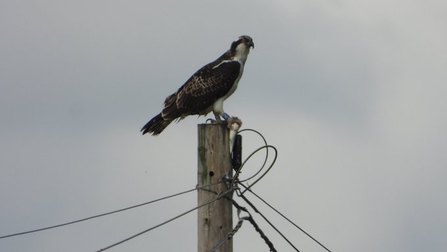As we approach the end of the season, it is time (yet again) to say goodbye to the juveniles as they begin their first migrations. On Monday, 8th August, we saw 1H2(22) leave the nest for the last time to be followed, soon after, by her sister, 1H3(22) on Friday, 12th August. We can now also confirm that 1H1(22) (the first of the three juveniles to fledge) has now also left on migration as of Sunday, 28th August.
Up, Up... and Away!
Last Footage of 1H2(22) (https://youtu.be/WyssUfdECGM)
The last footage of 1H2(22) prior to her migration on Monday, 8th August
Maya and 33(11) have since been seen on and around the nest and will be expected to leave in the coming days. They will stay past the juveniles' departure to ensure the protection of the nest site from other Osprey that may be looking to imprint upon it.
Last Footage of 1H3(22) (https://youtu.be/Xim0RJBC1AI)
The last footage of 1H3(22) prior to her migration on Friday, 12th August
Typically, the juveniles would be expected to travel south through France and Spain, continuing down the western coast of Africa where the waters are extremely rich in fish for them to eat. Some ospreys will go as far as Ghana to winter whereas others have been seen as far north as southern Spain and Portugal over the winter months.
Last Footage of 1H1(22) (https://youtu.be/wobA7sYCPB8)
The last footage of 1H1(22) prior to her migration on Sunday, 28th August. She was the last of the Manton Bay juveniles to leave this year.
With the expected southern trajectory we'd expect the juveniles to be using, it came as quite a surprise to us when 1H2(22), the first of the juveniles to migrate, was seen and photographed at Frodsham Marsh (a popular bird-watching site in northwest Cheshire)! Encouragingly, she was seen with a fish that she had caught so, even if she has started her journey in the wrong direction, she is clearly quite capable of providing for herself.

Credit: Paul Ralston
Ospreys are what is known as an obligate migrant, meaning they will consistently journey between their wintering grounds in the south, and their breeding grounds in the north every year. Following their first migration, though, the juveniles will stay in their wintering home for the entirety of their second year, only returning north at sexual maturity. So, who knows? In two or three years time we might be seeing the return of this years juveniles, coming back to raise young of their own...

